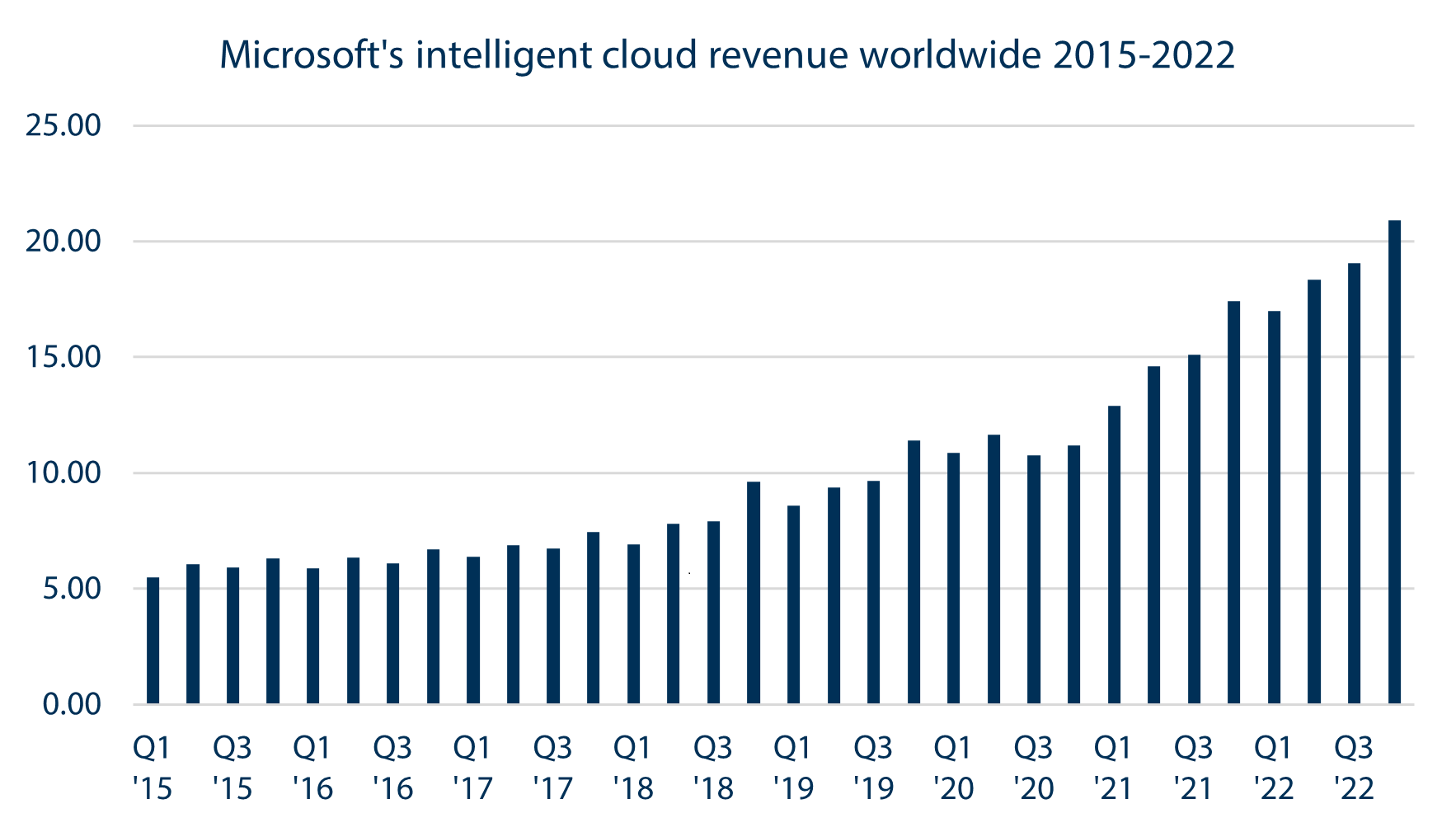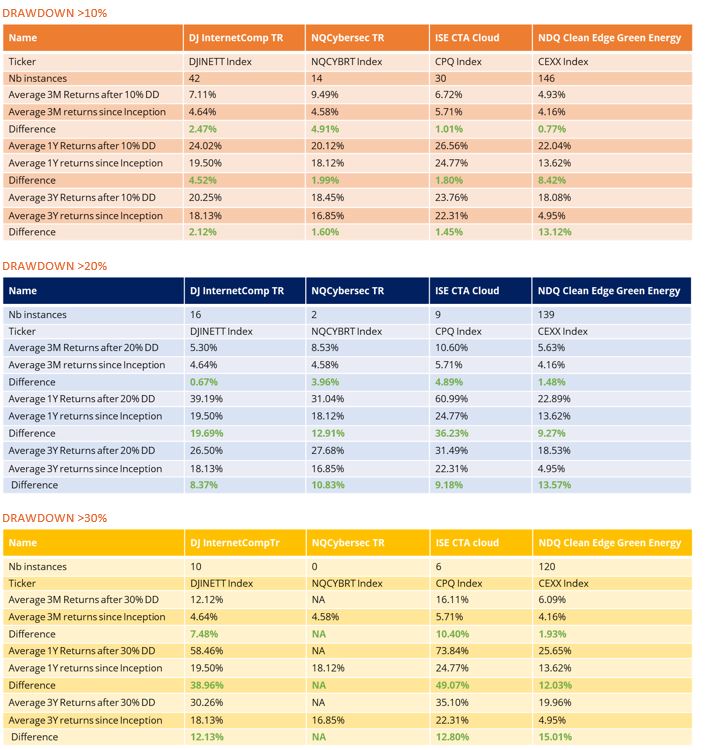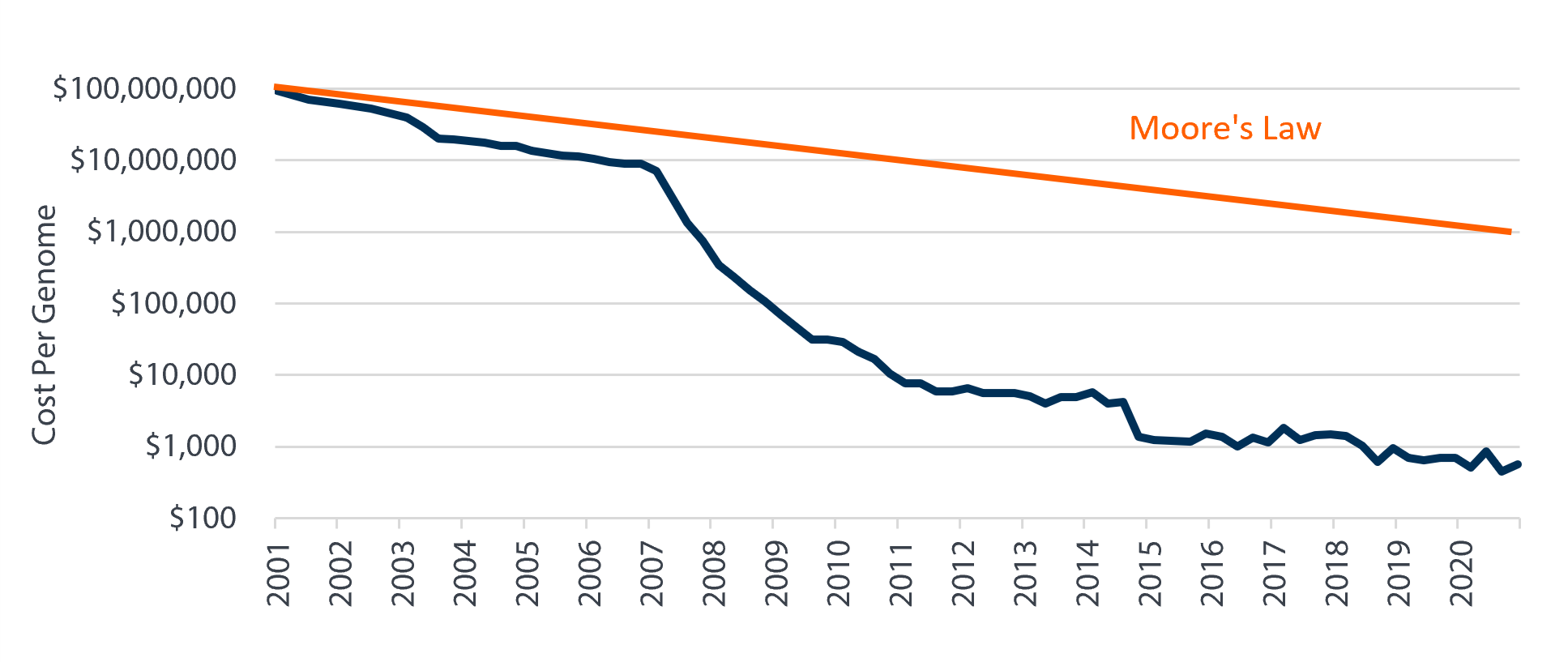“The case for digital transformation has never been more urgent or clearer. Digital technology is a deflationary force in an inflationary economy.”
Satya Nadella
Key takeaways
- What recession? If recent earnings results are any indication, rather than being hit by recessionary pressures, cloud computing companies seem to be benefitting from them.
- Microsoft, Google and Amazon are demonstrating just how vast the cloud industry has become.
- Microsoft hit an impressive $100bn annualised run rate for cloud revenue and AWS is fast becoming Amazon’s profit centre.
- Companies clearly seem to be staying the course with their digital transformation strategies.
During IBM’s second-quarter earnings call, CEO Arvind Krishna remarked that rather than being hit by recessionary pressures the company may be benefiting from them, “We see technology as deflationary. It acts as a counterbalance to all of the inflation and labour demographics people are facing all over the globe.” If recent earnings results are any indication, and he may have a point.
Elsewhere, on the Microsoft earnings call, CEO Satya Nadella remarked on the same trend at play, as he reiterated cloud can help businesses counter inflation, “Coming out of this macroeconomic crisis, the public cloud will be even a bigger winner because it does act as that deflationary force.”
Microsoft was not unaffected by the recent macroeconomic storms: the strong US dollar saw the company hit by unfavourable foreign exchange rate movements, further Covid shutdowns in China impacted the company’s PC division, and its LinkedIn and Search segments saw a reduction in advertising spend. That said, cloud computing seems somewhat insulated from the macro pressures affecting other parts of the economy, this is certainly reflected in the recent numbers from the big three cloud companies. For its fiscal 2022 second quarter, Microsoft reached an impressive $100bn annualised run rate for cloud revenue; generating $25bn in quarterly revenue - managing a remarkable 28% gain despite recessionary and foreign exchange rate pressures. Microsoft is demonstrating just how vast the cloud industry has become.

Source: Statista, 2022. References to specific companies should not be construed as a recommendation to buy or sell shares or other financial instruments issued by those companies, and neither should they be assumed profitable.
The current economic landscape may further cloud growth; as businesses aim to do more with less to navigate a more challenging environment. This is reflected in terms of cloud investment, with Nadella reporting, “we are seeing larger and longer-term commitments and won a record number of $100 million-plus and $1 billion-plus deals this quarter.” And note, that Microsoft’s gross margin is 68.32%, slightly higher than the weighted average of the First Trust Cloud Computing UCITS ETF (“FSKY”)of 64.32%.
It was a similar story at Amazon. Amazon’s cloud segment is growing much faster than the overall business. The company reported AWS revenue growth of 33% reaching $19.74bn for the quarter. CFO Brian Olsavsky echoed that rising inflation and the possibility of an economic slowdown may actually benefit cloud growth, "Just like when the slowdown hit in 2020, we are prepared to help customers optimise their costs." Looking at the top line figures, and even with very conservative projected growth rate. If AWS revenue was to grow at only 20% over the next year theoretically AWS could have the same amount of earnings next year as the total company’s earnings (‘EBITDA’) for 2021.* Not only is cloud growing faster than the rest of the company, it is also Amazon’s profit centre.
Google's parent company Alphabet reported $6.3bn in cloud revenue, up by an impressive 35% year-over-year, the fastest growing of the big three. And all three big public cloud names prove there remains high demand for cloud computing resources despite, and maybe because of, the current economic climate.
Companies clearly seem to be staying the course with their digital transformation strategies: cloud computing, storage, database, and cybersecurity solutions are so essential to today’s economy they have effectively become the utilities of the digital age.
Gartner’s latest forecast confirms this as it sees worldwide public cloud end-user spending to reach $495bn in 2022, and this growth is across the 'full stack' of cloud computing. For example, infrastructure-as-a-service (IaaS) spend is forecast to grow 30.6% and platform-as-a-service (PaaS) at 26.1%.1 As Gartner’s John-David Lovelock states, “Digital business transformation is the number one thing happening in IT right now and you can’t cut your way to it.”
Outside of the big three, the latest reports from the cloud market continue to be strong. Oracle is projected to report cloud revenue growth around the 40% mark when it announces its FYQ1 numbers on August 31st. Salesforce announced Q1 revenue of $7.41bn, up 24% year-over-year, with Co-CEO Marc Benioff commenting, “There is no greater measure of our resilience and the momentum in our business than the $42 billion we have in remaining performance obligation, representing all future revenue under contract.” Arista Networks, a data provider for Meta (previously Facebook), saw its first $1bn revenue quarter in Q2 2022, despite the challenges of an uncertain supply chain environment. The company also had strong guidance for the upcoming quarter.
By all accounts cloud computing companies are not presenting signs of suffering from recessionary pressures; they may be benefiting from them. Clearly Forbes sees plenty of growth ahead, as they report that currently only 50% of corporate data is in the cloud, up from 30% in 20152.







Share